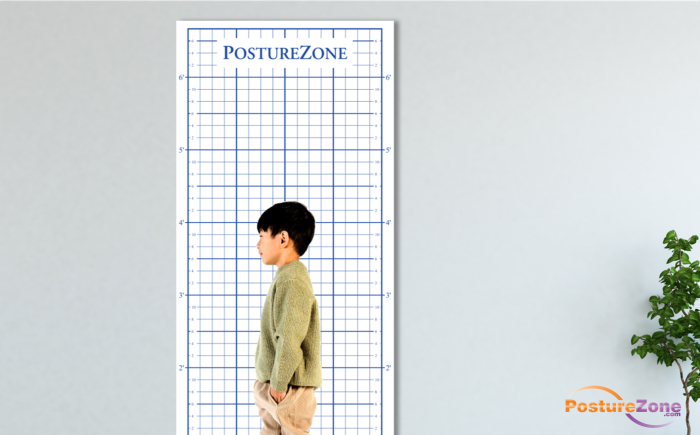Implementing Posture Assessment Grids in Your Chiropractic Practice: A Comprehensive Guide
Posted by Renee North, CPEP on 11th Nov 2024
Posture assessment grids are invaluable tools for modern chiropractic practices, offering both practitioners and patients clear visual evidence of postural deviations and treatment progress. This guide explores how to effectively implement and utilize posture grids to enhance patient care and practice success.
Understanding the Fundamentals of Posture Grids
What Is a Posture Assessment Grid?
A posture grid is a standardized screening tool consisting of vertical and horizontal lines that create a precise reference frame for evaluating postural alignment. When patients stand in front of this grid, practitioners can accurately assess deviations from ideal posture in multiple planes.

Key Benefits
- Objective documentation of patient condition
- Visual evidence for insurance documentation
- Enhanced patient education and engagement
- Precise progress tracking
- Legal documentation protection
Setting Up Your Assessment Station
Essential Equipment
- High-quality posturezone grid with clear markings
- Proper lighting setup to minimize shadows
- Non-reflective backdrop
- Camera or mobile device for consistent documentation
- Level floor surface
- Class on how to perform a posture assessment
Optimal Room Setup
Position your grid against a neutral-colored wall with adequate space for patient movement. Ensure consistent lighting and eliminate shadows that could affect image quality.
Conducting Professional Assessments
Standard Views for Documentation
- Anterior view
- Posterior view
- Lateral views (both sides - optional)
- Functional movement assessments when applicable
What to Assess
- Head position relative to shoulders
- Shoulder height symmetry
- Arm to torso void right versus left
- Fingertip reach right vs left
- Pelvic alignment
- Knee positioning
- Ankle alignment
- Spinal curves
- Weight distribution
Read Posture Pictures for more information on how to assess.
Documentation Best Practices
Photo Documentation Protocol
- Standardized patient positioning
- Consistent camera settings and distances
- Regular equipment calibration
- Secure storage system
- HIPAA-compliant digital filing system
Assessment Forms
Include detailed notes on:
- Initial observations posture assessment forms
- Specific measurements
- Patient complaints
- Correlations between posture and symptoms
- Treatment recommendations
Patient Education and Engagement

Using the Grid as a Teaching Tool
- Demonstrate postural deviations visually
- Explain the relationship between posture and pain, ROM and balance
- Show progress through comparison photos
- Illustrate the impact of daily habits
Home Care Integration
- Provide posture awareness exercises
- Recommend ergonomic modifications
- Suggest lifestyle adjustments
- Create achievable improvement goals
Treatment Planning and Progress Tracking
Creating Objective Benchmarks
- Set measurable goals for improvement
- Define timeline expectations
- Establish regular reassessment intervals
- Document changes systematically
Progress Reporting
- Compare initial and follow-up assessments
- Establish semi-annual or quarterly analysis
- Track objective measurements
- Document subjective improvements
- Update treatment plans based on progress
Insurance and Legal Considerations
Documentation Requirements
- Maintain detailed assessment records
- Include measurement protocols
- Document treatment necessity
- Track outcome measures
Risk Management
- Obtain proper consent forms
- Maintain consistent assessment procedures
- Keep comprehensive records
- Follow privacy protocols
Technology Integration
Digital Solutions
- Electronic health record integration
- Digital measurement tools
- Automated reporting systems
- Cloud storage solutions
Analysis Software
- Posture analysis programs
- Measurement tools
- Report generation
- Patient education lectures
- Patient education flyers
Marketing Your Services
Patient Communication
- Explain the value of posture assessment
- Share success stories
- Demonstrate expertise
- Highlight unique capabilities
Practice Promotion
- Feature assessment capabilities in marketing
- Share educational content
- Offer posture screening events
- Network with other healthcare providers
Conclusion
Implementing a posture assessment system in your chiropractic practice requires a small initial investment in equipment (posture grid and camera) and posture training, but the benefits to patient care, practice success, and billable services make it worthwhile. When properly utilized, this tool enhances diagnostic accuracy, treatment planning, and patient engagement while providing valuable documentation for clinical and legal purposes.


